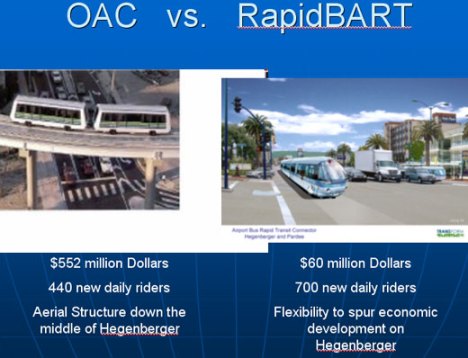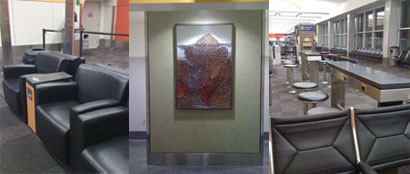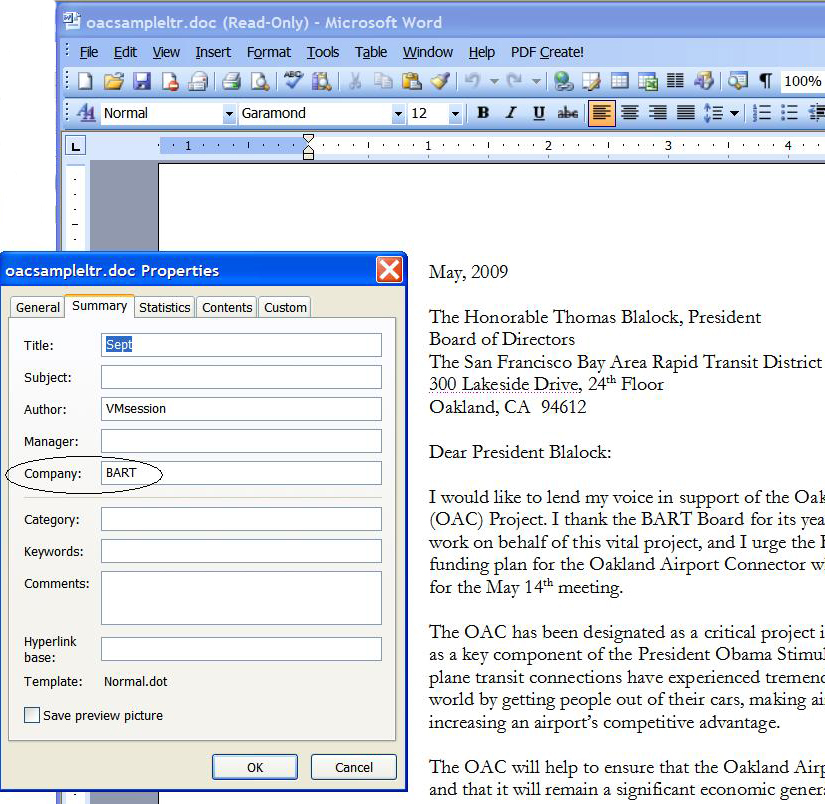(Cross posted at Living in the O.)
Disclosure: I was recently hired to work part time on a short term basis for TransForm on the Oakland Airport Connector campaign. However, the thoughts expressed in my posts on this subject are my own and should not be construed to be those of TransForm.
On Tuesday morning, the Oakland City Council, via the Public Works Committee finally had a chance to review the Oakland Airport Connector (OAC). The last time they had reviewed the project was in 2006, and it has changed greatly since then, with projected ridership plummeting and costs growing. And the Public Works Committee members seemed to understand this well, asking pointed questions of BART and agendizing the project as an action item for their first meeting in September, when they return from recess.
Before the committee deliberated, BART and TransForm gave 10 minute presentations. BART’s presentation was the same one they’ve been giving for weeks – I think I’ve seen it three times now. I don’t have a copy of the Powerpoint slides, but here are the key points in it:
- The first page has renderings of the OAC stations that are entirely inaccurate now. The airport station shows a covered walkway directly from the station to the terminal, even though this was taken out of the project due to costs long ago.
- On ridership, BART concedes that its financial model shows that there will only be 4,350 riders in 2020 but explains that this is a very conservative model and makes the arguments that its 13,000 ridership projection from the EIR is still valid (I’ll get to why that’s wrong later)
- BART explains away eliminating the two intermediate stops, essentially blaming it on Oakland for building a Walmart at one of the proposed stops and then saying that one day in the future the other stop “could” be built. (Yeah, because BART is so good about building infill stations.)
- There is one slide that mentions the rapid bus alternative that TransForm has proposed and then says that BART studied it and it doesn’t work. There is no more information provided on this.
John Knox White from TransForm followed with a new presentation, which mostly focused on ridership. You can read the entire presentation, but the short version is that while the 2002 EIR projects 10,200 new riders per day, a lot has changed since then. The fare has increased from $2 to $6, AirBART ridership has increased much more than expected, and the intermediate stops have been taken out. The reality is that BART’s own numbers show that there are only projected to be 440 new riders per day. Yes, you read that right, half a billion dollars for 440 new riders per day! In contrast, a rapid bus would cost an estimated $60 million and bring in 700 new riders per day. You should check out the full presentation for all the images and numbers, but this one alone is quite telling:

After the two presentations, several Oaklanders spoke about the need to study alternatives and why the current OAC is not the best project for Oakland. dto510 presented the committee with V Smoothe’s awesome presentation about financing. If you haven’t read it yet, check it out right away, as its some of her best work yet (which says a lot). A few OAC supporters also spoke, claiming the OAC was good for business and labor.
Then it was the committee’s turn, which was the really fun part. Between the four committee members, every question that we’ve been encouraging BART and MTC to ask were finally asked. Pat Kernighan started things off, saying that she wasn’t sure that she had access to all the correct info. She proceeded to ask a series of questions of BART:
- What happens to the funds if they don’t go to the OAC?
- What are the operations costs?
- How many people will use it?
- She asked for a clarification of the Port’s position, since Commissioner Margaret Gordon spoke and said the Port has asked for a study of alternatives and still has concerns about local hire requirements, and a Port staffer basically said the Port loves the project unequivocally.
- What fees will fund this project? (i.e. airport passenger fees)
- She asked for more comparison of a bus to the OAC, including pros and cons and wanted to know how a rapid bus would be different from the currently operating AirBART bus.
- Are any of the funds from voter approved measures specifically dedicated to this project?
Desley Brooks followed, calling for the item to be re-agendized as an action item immediately to see if the City still wants to continue to support the project. She said that based on the information provided at the meeting and the letter from Don Perata, who was an early supporter of the project, she needed more information. Also, early in the meeting, before the presentations, she brought up concerns about hiring locally and hiring minorities, stating that BART has an atrocious record on these issues.
Public Works Chair Nancy Nadel said she wanted to echo Kernighan’s questions. Particularly, she was concerned about high costs, high fares, and local jobs. She also wanted more information on how smooth the transition would be on each alternative. Nadel ended her comments by saying that her district (in West Oakland) is seeing enormous AC Transit service cuts, and ACT is able to accommodate more people at lower cost. She didn’t say this, but I assume she was speaking to the fact that the stimulus funds, if they didn’t go to the OAC, would be reverted back to the transit agencies, including ACT.
Rebecca Kaplan, who has been a leader in fighting for a better connnector, spoke last. She explained that the stimulus money would not be lost if it was not given to the OAC, since it would be reverted back to the transit agencies. The only way it would be lost, she said, is if it is given to the OAC, since most of it would go to concrete, steel, and out of town jobs. She then asked for a legal analysis of BART’s 2006 contract with Oakland, which states that BART should give the RFP to Oakland before it is issued and allow Oakland 15 days to comment. BART did not follow this process and instead allowed Oakland to see the RFP several days after it had been issued.
Kaplan brought up the possibility of a third terminal being built at the airport and explained that at a BART board meeting, staff said that the Port would pay for an extension to this terminal if it was ever built, which is not true. She agreed with TransForm that BART’s ridership numbers and revenue projections for the OAC include revenue from third terminal passengers but not the cost of extending the OAC to the third terminal.
Kaplan ended by making a pretty incredible comparison about jobs creations. The OAC, which costs more than half a billion dollars, is projected to generate 350 jobs, while another project that was heard at Oakland’s Community and Economic Development Committee later in the day on Tuesday, which has a similar price tag, is projected to generate 5,000 jobs.
The committee and the full council will be holding further hearings on the OAC in September, but there’s another important hearing next week before the Metropolitan Transportation Commission (MTC). They will be voting on $140 million in funding for the OAC. This vote will be one of the last votes on funding for the OAC, yet BART has failed to provide accurate information on projected ridership and a bus alternative. We are urging MTC not to approve this funding until BART can answer questions that advocates have been asking for months. Please join us:
What: MTC Meeting on Oakland Airport Connector Funding
When: Wednesday, July 22nd @ 10 am
Where: MTC Headquarters (101 Eighth St near Lake Merritt BART)
Previous posts on the Oakland Airport Connector:




You must be logged in to post a comment.